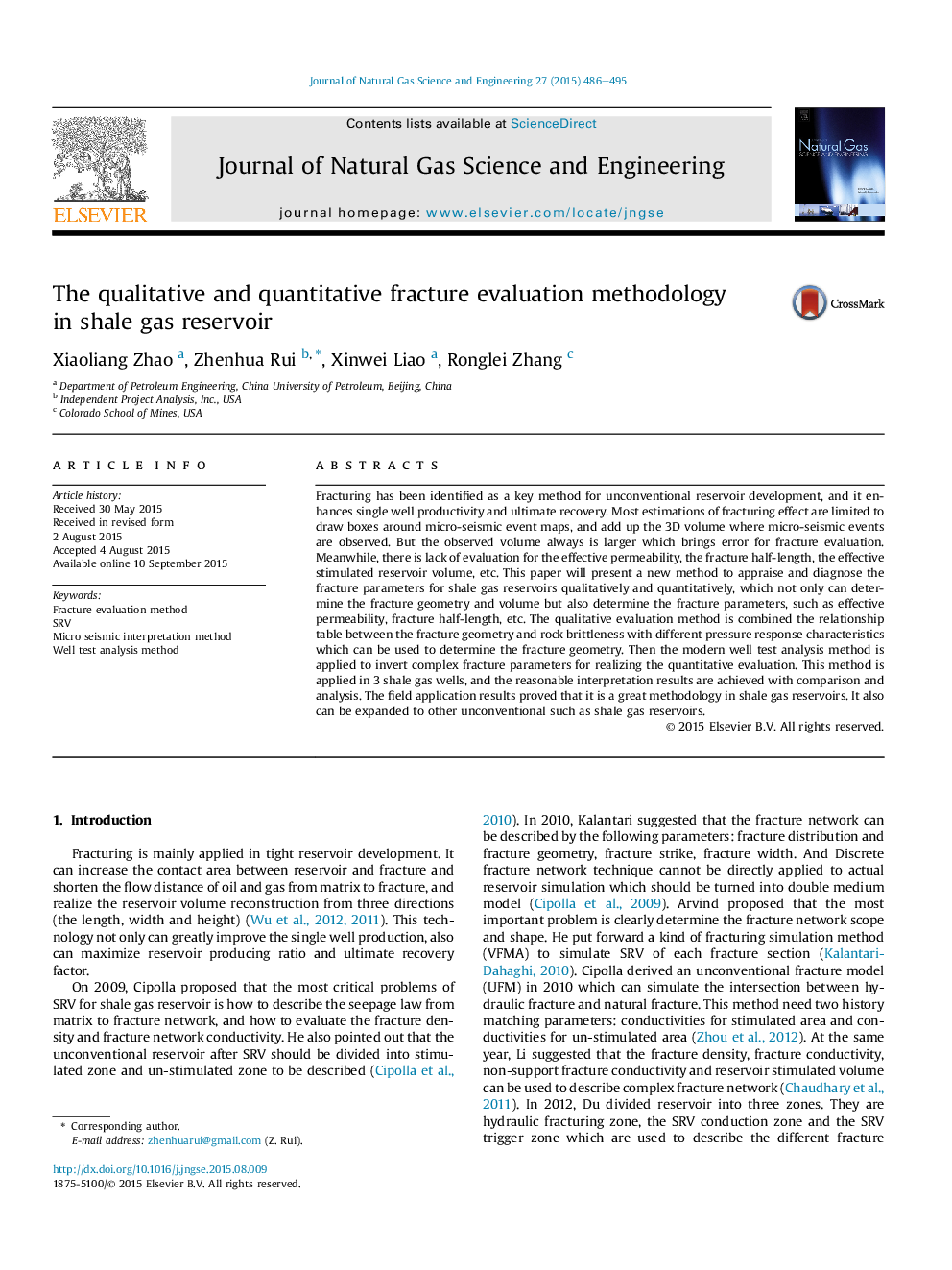| Article ID | Journal | Published Year | Pages | File Type |
|---|---|---|---|---|
| 1757603 | Journal of Natural Gas Science and Engineering | 2015 | 10 Pages |
sFracturing has been identified as a key method for unconventional reservoir development, and it enhances single well productivity and ultimate recovery. Most estimations of fracturing effect are limited to draw boxes around micro-seismic event maps, and add up the 3D volume where micro-seismic events are observed. But the observed volume always is larger which brings error for fracture evaluation. Meanwhile, there is lack of evaluation for the effective permeability, the fracture half-length, the effective stimulated reservoir volume, etc. This paper will present a new method to appraise and diagnose the fracture parameters for shale gas reservoirs qualitatively and quantitatively, which not only can determine the fracture geometry and volume but also determine the fracture parameters, such as effective permeability, fracture half-length, etc. The qualitative evaluation method is combined the relationship table between the fracture geometry and rock brittleness with different pressure response characteristics which can be used to determine the fracture geometry. Then the modern well test analysis method is applied to invert complex fracture parameters for realizing the quantitative evaluation. This method is applied in 3 shale gas wells, and the reasonable interpretation results are achieved with comparison and analysis. The field application results proved that it is a great methodology in shale gas reservoirs. It also can be expanded to other unconventional such as shale gas reservoirs.
